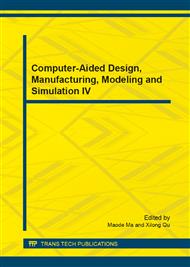p.555
p.559
p.568
p.575
p.580
p.585
p.589
p.593
p.598
Application of Computer Technology in the Design of the Third Party E-Commerce Platform
Abstract:
This paper has optimized the design of the third party e-commerce platform by using the RMS developed environment, C++ development language, and the GCC compiler, and has developed the risk management platform of third party e-commerce for logistics, then has tested the performance of the platform. The test results indicates that the time spent on the prediction of financial risk task is mostly in the range of 0.116~0.12s, keeping on a smaller scale, which has verified the reliability and stability of the platform performance. At last, the paper carries out an accounting of the financial risk of an enterprise within the next year by using the platform, and obtains the risk index and weight coefficient, which provides the technical reference for the application of computer in e-commerce platform.
Info:
Periodical:
Pages:
580-584
Citation:
Online since:
October 2014
Authors:
Price:
Сopyright:
© 2014 Trans Tech Publications Ltd. All Rights Reserved
Share:
Citation:


